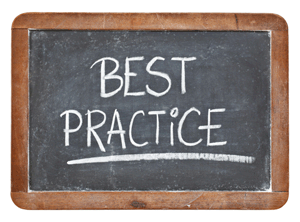PRM Best Practices: Increasing Partner Engagement with a Partner Portal
Increasing partner engagement is an ongoing effort theme in many channel programs. In this article, we’ll explore key strategies to increase engagement across your partner base.
This is the first in our series of blog posts that will dive into best practices around specific aspects of partner relationship management. Next will be Deal Registration.
Keys to Driving Partner Engagement in Your Portal
A portal is first and foremost a business application. You don’t build it to market to partners, but to make it easier for them to sell.
Don’t Use the Website Mindset
Your website is about getting your market’s attention. The partner portal is about facilitating the process of selling. Partners don’t go there to be marketed to, but to find information or accomplish a sales errand quickly. From a marketing perspective, there’s no need to get their attention; they’re a partner and you already have it.
Too many companies design the portal as a marketing tool to grab attention, and load it down with graphic bells and whistles, along with page after page of content. This results in badly invested resources (creating all those graphics and content that partners are ignoring), or worse, it results in a portal partners don’t bother visiting because it’s too cluttered, making it difficult to complete their task.
Create Simple Landing Pages
Channeltivity’s user data has shown over and over again that simple, instructive landing pages best increase partner engagement.
When partners arrive to your portal, you want them to immediately see an easy route to their goal: Who’s my partner manager? Where are the most current documents? What are the most pertinent announcements? Give partners a big button that says “Register a deal,” ”Register MDF,” or “Get my leads.” Provide simple navigation and simple feedback tools to make it easy for partners to get to where they want to be in your portal quickly.
Have Resources Available to Guide New Channel Partners Through the Portal
Instead of burying new partners in materials and leaving them to find their way, up the attention 200% immediately after your sign them. As part of your process for on-boarding, spend time familiarizing them with the partner portal.
Increase partner engagement by showing them how easy it is for them to track deals and access critical documents. Make sure the portal makes it clear how they update information—and makes it simple to do so.
Support Good Vendor-Partner Relationships
Reid Hoffman, founder of LinkedIn, said that at any given time you know a max of one hundred people who will actually do you a favor. You do things that create progress for these people, they remember you, and do something in return. He called it the “theory of small gifts.” That’s engagement. That’s how relationships are formed.
And so it goes with your portal: it’s not about blinking lights or how pretty the content is – no amount of these things in a portal will make it engaging.
Instead the portal is another opportunity to create progress for your partners. The question they’re always asking themselves is, “Am I making money here?” If they’re not, they’ll get back to a place where they are.
Remember, design your channel portal to help create mutually beneficial relationships with partners. Beautiful and engaging doesn’t increase what matters: sales.
Release: Import Opportunities from SF and Improved SF Field Mapping
3 Marketing Development Funds Best Practices That Work
